The objects that we live and interact with are becoming smarter by the day. Undoubtedly, Internet of Things (IoT) devices have redefined the way that we use the daily appliances we rely on. From smart lighting, to thermostats, to entire buildings, our devices are more connected than ever.
But, with the billions of IoT devices that are expected to be connected by 2030, comes masses of generated data that needs to be accounted for and stored.
And it is for this reason that the rise of the IoT has necessitated the growing demand for data centers and edge computing. Businesses across the world have turned to these solutions in order to securely manage their data and boost operational efficiency.
With this in mind, let’s explore what the new IoT landscape will mean in data and supply chain management, as well as how third-party providers like TecEx can help you relocate your data operations with ease.
Importance of IoT in Data Management
The IoT has become one of the most important aspects for many organizations working with physical assets. This is primarily due to the fact that it enables them to collate and organize large volumes of data, sourced from a range of different places.
With this information, businesses can learn more about their operational state-of-play, and make actionable decisions as a result. One example of this may be a smart thermostat. A business who uses these devices throughout the building will be able to more easily monitor what temperature and humidity their rooms need to be in to keep them both functional and profitable.
What’s more, IoT devices such as smart thermostats can easily connect to the mobile applications and the cloud, ensuring that the data is easily accessible. This convenience in cost management makes it straightforward for organizations to optimize their processes and provide the best value-for-money possible.
Not only this, but IoTs can also play a role in creating a new revenue stream for e-commerce or service-based businesses. Leveraging existing customer’s data may allow them to greater personalize the customer experience, implement new policies, or create new products. A smart home security company, for example, may choose to release a new range of sensors and alerts that offer real-time, accurate information.

The impact of IoT for Data Centers and Edge Computing
So, now that we know that IoTs are increasingly important in data management, how will it specifically affect data centers and edge computing?
Put simply, all of the data that is generated through IoT devices has to go somewhere. And, with the rise of IoT, cloud-based computing models may no longer be able to process the massive amounts of data required.
As a solution to this, data centers and edge computing offer data transfer solutions that alleviate the strain on the network. Data centers, on one hand, store the IoT data in a centralized facility and distribute it across a network, whereas edge computing, as the name suggests, stores the data close to the source or on the edge of the network.

The impact of IoTs on the data center and logistics industry has already been significant, and it looks to only be increasing.
This has only been bolstered by the onset of ‘Industry 4.0’, or the IIoT (Industrial Internet of Things) which can be defined as the combination of data and manufacturing or industrial processes in a new phase of the industrial revolution. Among other things, this ongoing framework refers to users being able to utilize data to make real-time operational changes.
Advantages of Using Data Centers for IoT Data Management
There are many advantages to using data centers for IoT data management, including real-time data analysis, high levels of data security, and cost efficiency. Let’s explore all the advantages in further detail:
-
- Real-time data analysis: Utilizing data centers for data management means that users can analyze data in real-time. This allows businesses to provide actionable insights and make operational decisions with increased speed and accuracy. It also means that errors can be altered and amended more quickly than with other data management methods.
-
- Storage capacity: Data centers typically have high storage capacities, and this means they can process larger volumes of data than would be possible if you were managing your data locally. For larger systems, this means that more valuable information can be kept and stored safely.
-
- Scalability: Data centers are a flexible method of data management, which means that, should capacity require it, organisations can expand their infrastructure to fulfil their growth potential. This can be particularly important in industries such as healthcare and finance, where data needs can be highly variable and unpredictable.
-
- Cost efficiency: As well as being flexible, data centers are also highly cost effective. Data center connected devices can be configured to connect either directly to other devices, or to communicate with the cloud only when necessary, which helps to reduce bandwidth costs. Indeed, businesses managing their product’s data through data centers have ownership over their data, as well as lower costs for maintenance. This makes them a particularly cost-effective solution for data management.
-
- Security: Cloud integration is crucial for data centers due to the paramount importance of data security in contemporary information management. Fortunately, leveraging data centers provides a significant advantage here by enabling robust security measures to safeguard sensitive data. These facilities are meticulously designed to include a wide array of safety features, encompassing both physical and virtual protections like firewalls, encryption, and access restrictions.
-
- Cloud integration: The cloud is becoming a bigger deal every year. As such, it’s no surprise that data centers have become popular as a way to facilitate cloud migrations. Data centers offer cloud integration by providing the necessary infrastructure, scalability, security, and centralized management for cloud infrastructure. They act as centralized hubs, and help to streamline the management of cloud services, facilitating efficient and effective integration. As a result, they enable businesses to easily scale their operations and adapt to changing needs, while implementing stringent security measures to ensure data confidentiality and integrity.
All of these advantages have had real-world implications, helping businesses save money through decreased expenditures and increased operational efficiency. And this is a trend that only looks to be continuing.
Challenges of IoT in Data Management
On the other side of the coin, there are some specific challenges of managing IoT devices with data centers.
One of the most common challenges of using data centers for these devices is the incorporated costs of running and maintaining the facility. In certain circumstances, data centers may be located too far from the edge of a network to guarantee low latency data processing. In these cases, it can test the ability of the data center to deliver real-time data analysis.
Indeed, the sheer amount of data that a full network of IoT devices generates is an undoubted challenge for data centers to contend with. Not only is there an immense amount of data brought up, but it can also be very complex and multi-format, from images and videos to sensory data. This analysis and extraction is something that data centers are usually able to handle, but an excess of it can cause performance issues.
To get around this, data centers dealing with IoT devices have begun the adoption of hybrid data management strategies. This is where data is stored and distributed across multiple locations, and these may include edge devices or cloud-based data centers. These help to speed up the process of data processing and storage and make it easier to scale operations.
What is needed for IoT Data Management?
Data management for IoT devices is not an easy feat. The massive amounts of data that are generated through a connected network of devices requires a large and interconnected infrastructure to support it.
This infrastructure comprises numerous components. For starters, there needs to be provision for all relevant data to be collected, whether that be through sensors, devices and other monitoring systems. This data can either be collected in real-time or at frequent intervals, depending on the set-up.
In order to collect the data, it’s vital that there are high levels of connectivity for each location data management is required in. To ensure this, different networks such as Wi-Fi, cellular or specific protocols may be used to transmit the data securely.

Merely storing the data is another key requirement of data management for IoT devices. Whether it’s cloud-based storage, databases or distributed file systems, there needs to be enough capacity and security in data storage for companies to invest their resources into it.
Equally important is data processing. Much of the mass volumes of data that is sent from IoT devices is not structured, and as such needs processing for it to be analysed. Real-time processing and edge computing can help to filter and aggregate data, meaning it can be properly filtered and aggregated.
Once it has been processed, the data can be utilized by businesses, who may analyze the patterns and insights to improve their operational efficiency. To speed up this process, data mining and AI algorithms can be exploited.
TecEx Data Center Importing and IOR Solutions
Migrating your services to a centralized data center can be a challenging task – particularly when dealing with a connected network of IoT devices. Luckily, TecEx is here to provide you with a seamless solution for data center importation.
We possess an extensive database of knowledge accumulated over a decade of operation. With our expertise, we are the perfect partner to assist you in securely and efficiently transporting your hardware to its intended destination.
Trust us to handle your data center IOR requirements, enabling you to focus on your core business while we take care of the logistics.
Learn more about our data center IOR services.


